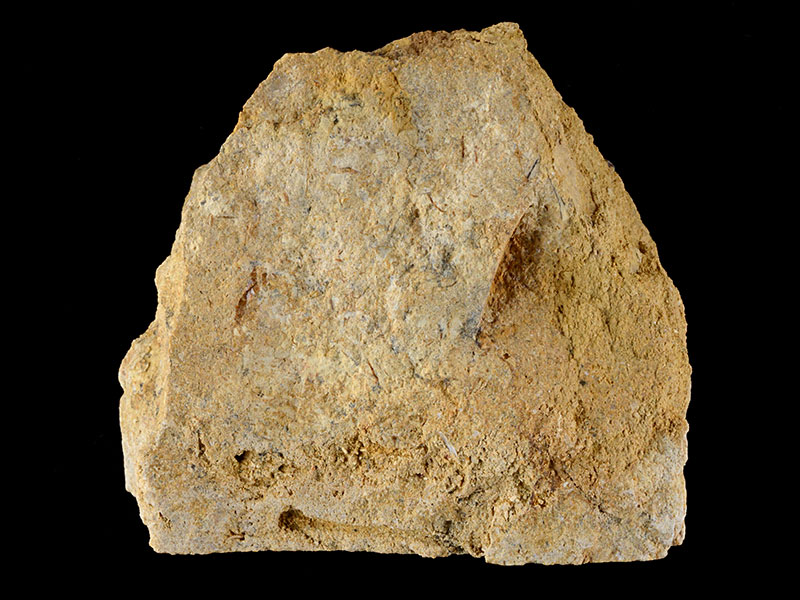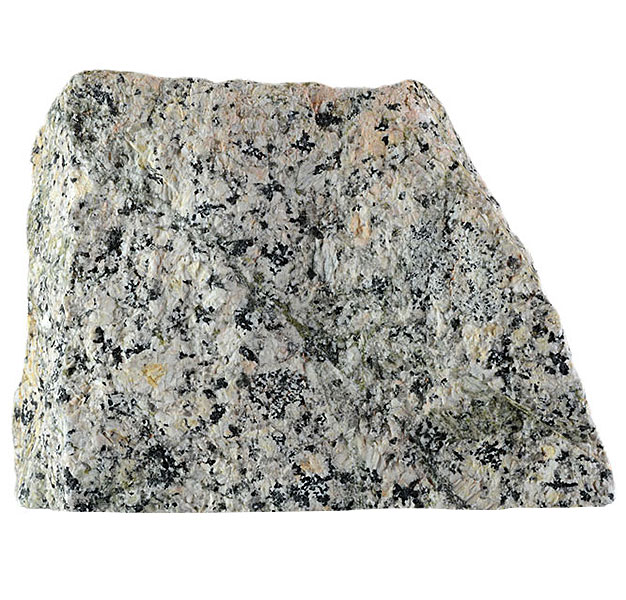
Fact sheet
This sample of fossil-rich rock comes from the limestone escarpment at Wotton Hill, Gloucestershire, which contains exposures of rocks of the lower and middle Jurassic Periods. The lowest part of the Wotton Hill exposures consists of the Bridport Sand Formation, which is overlain by the 'Cephalopod bed' from which this sample comes. The 'Cephalopod bed' is rich in carbonate fossil molluscs, including ammonites and belemnites. It can be classified as a limestone, although it is relatively rich in quartz grains and is overlain by the 'Scissum Beds' (part of the Leckhampton Limestone) of the Middle Jurassic.
The rock thin section illustrates both silt-rich and carbonate-rich areas. The framework of grains includes small quartz grains and fossil fragments, including bivalves, ammonites and belemnites with a micritic cement. Cavities in fossil bivalves are filled by a sparry calcite cement. A large part of the centre of the section is rich in angular quartz grains (50–100 microns) and might be classified as a siltstone. This feature is probably the result of infilling a cavity on the sea floor that was composed mainly of shell fragments, some broken but some remaining almost whole.
The United Kingdom Virtual Microscope (UKVM) collection consists of igneous, sedimentary and metamorphic rocks from around the UK.
It is intended as a teaching resource, helping to tell the story of the common rock types and how they form, and reflecting the history of the UK at the margins of the continent of Europe. The collection is a series of teaching sets, for example igneous rocks from the North Atlantic Igneous Province and SW England; high-temperature metamorphic rocks from Scotland and low-temperature metamorphic rocks from Wales; and sedimentary rocks, including English limestones and sandstones.












